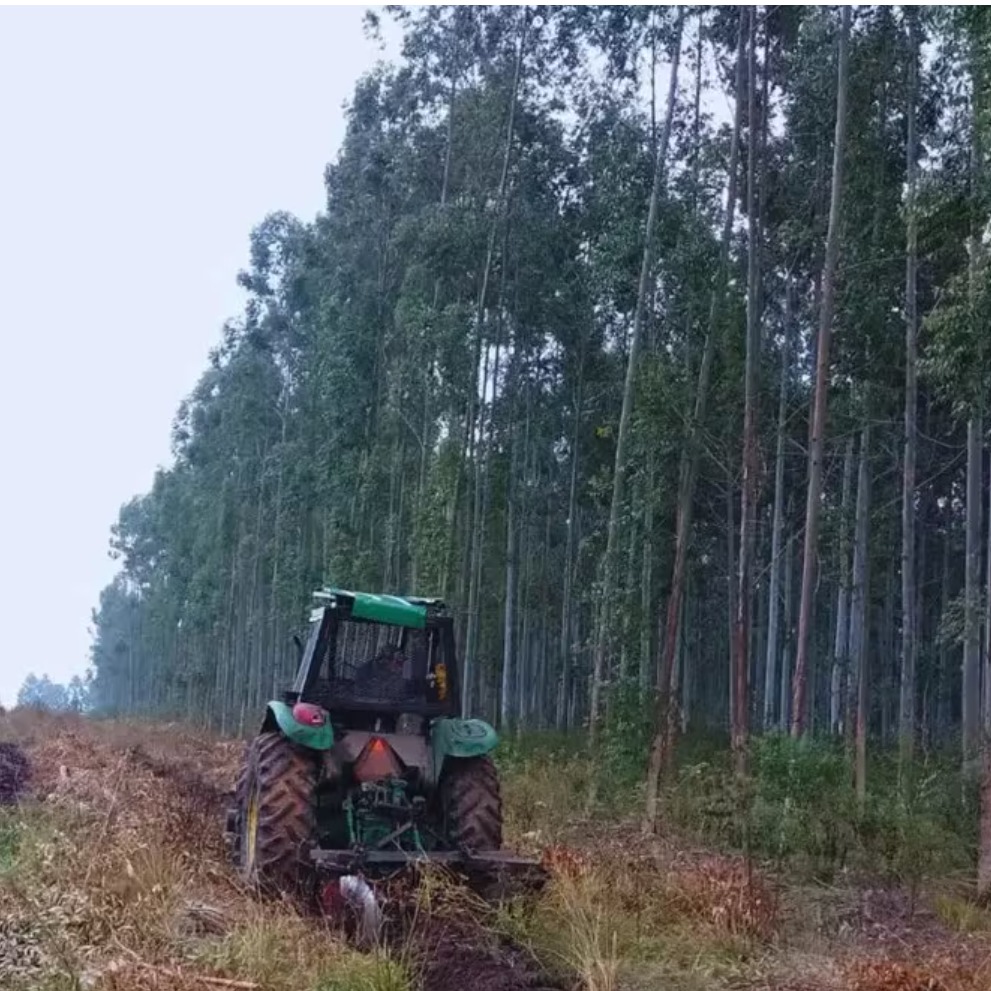
Forest Revolution: More than five decades of research and progress
Innovation and adaptation in cultivation techniques have positioned Entre Ríos as a leader in the production of Eucalyptus Grandis for more than half a century, INTA Concordia has been a fundamental pillar for the forestry sector in Entre Ríos and throughout Argentina. Through the provision of certified seeds and clones, and the exhaustive study of the properties and uses of wood, this institute has generated information and strategic services that have promoted forest development in the region. The forest impact on Entre Ríos
The province stands out on the Argentine forest map with 139 thousand hectares of plantations that represent 11.6% of the national total. This impulse has turned the province into the third forest-industrial pole of the country and the main ecologically favorable regions. The pines dominate these plantations with 59% of the total area, followed by eucalyptus with 27.5% and salicáceas (willows and poplars) with 6%. Investigation and innovation that mark the differentiating of the 70s, the INTA Concordia has been at the forefront of forest investigation in the region. Carlos de la Peña, a forestry engineer of the Institute, explains that although the first studies on pines and eucalyptus were published in 1956, it was not until decades later that an integral approach was developed under the National Forest Program. This program has allowed developing lines of Research ranging from the selection of species and planting sites to the proper management of wood according to its industrial destination. Health and environmental aspects have also been investigated, as well as the properties of wood for different uses, crucial information for planning and forest management in the region. TECHNOLOGICAL AND KNOWLEDGE TRANSFERING OF LOS Ángeles García, Forest Engineer of INTA CONCORDIA, highlights the close collaboration between the institute, producers and forestry companies. This synergy has allowed technologies to be applied rapidly in the field, improving the productivity and sustainability of plantations. Eucalyptus plantations in Entre Ríos are distributed in sandy, mestizo and clay soils, each with specific characteristics that affect productivity and The work necessary to optimize the growth of the roots. In the last decades, various tillage techniques have been evaluated, demonstrating that the breakage significantly improves the growth of plants in clay soils by reducing the resistance to the growth of the roots and facilitating the Water inlet. The combination of plow, dredge and camellón has shown to be the most effective in these soils. ADAPTATION AND INNOVATION IN THE FOREST INDUSTRY As the forest area and industry have developed, INTA CONCORDIA has adapted its research lines to address new demands and Challenges A remarkable example is the adaptation of Eucalyptus Grandis wood to construction techniques such as the light frame and log cabins. In addition, the constant training of operators and companies has been key to the growth of the sector. Global Use of Eucalyptoa World level, Eucalyptus is a versatile and widely used species. Its wood is fundamental in paper production due to its long and resistant fibers. It is also used in the construction of furniture and structures due to its durability. In the energy field, it is used as biomass to generate renewable energy. In addition, eucalyptus oil, extracted from its leaves, is a common ingredient in medicinal and cosmetic products. New research on eucalyptocon clones The availability of commercial clones developed by INTA Concordia, studies on handling and response to different Site conditions, as well as on the properties of wood for various industrial uses. These investigations seek to maximize the efficiency and adaptability of clonal plantations. The information generated by these investigations is spread, thus strengthening the forest-industrial chain of Entre Ríos and providing technical solutions to the challenges of the sector. INTA CONCORDIA has shown throughout more than 50 years the importance of accompanying and promoting forest research. His work has not only improved the productivity and sustainability of plantations, but also explored new uses and applications of eucalyptus wood, benefiting the entire production chain. The strategic alliance between researchers, companies and producers remains key to the strengthening and development of the forestry sector in Entre Ríos and throughout Argentina.
IT MAY INTEREST YOU
 They promote research in pine resins from the NEA
They promote research in pine resins from the NEA
The forestry industry is one of the most important sectors in the economies of Misiones and Corrientes. Thousands of hectares of pine supply the paper, pulp, boards and sawmill industry. Pinus elliottii, one of the species established in the region, in addition to providing wood, is used to produce resin, a non-wood forest product with high demand in the chemical, pharmaceutical and cosmetic industries. In 2\024, resin extraction of approximately 52,6\0\0 tons was achieved from approximately 18,\0\0\0,\0\0\0 trees in production, generating income and jobs with high expansion potential.
 Free seminar on the implementation of the European EUDR regulation on deforestation-free wood products
Free seminar on the implementation of the European EUDR regulation on deforestation-free wood products
The Argentine Forestry Association (AFoA) organizes the seminar «EUDR in Forest Products: Current status of implementation. Regulatory requirements and private experiences", which will take place on Wednesday, November 26, from 11:00 a.m. to 12:00 p.m., via Zoom, with live streaming on YouTube. The European Regulation on Deforestation-Free Products (EUDR) will enter into force on December 31, 2025 and will impose new requirements for forest products entering the European Union market.
 Paraguay | The plantations became instruments of territorial development and the generation of decent employment, INFONA highlights.
Paraguay | The plantations became instruments of territorial development and the generation of decent employment, INFONA highlights.
Plantings in different phases, control of ants and weeds, pruning and thinning, mechanized harvest, technology applied to the field and complete integration of the production cycle were part of the CREA Forestal proposal in its Technical Update Conference – JAT Forestal 2025. The event took place on Friday, November 14, at Estancia Ñemity, located in San Juan Nepomuceno, Caazapá, where agricultural producers, technicians, contractors, students and companies in the sector met to observe the forestry business of the future in action.





















